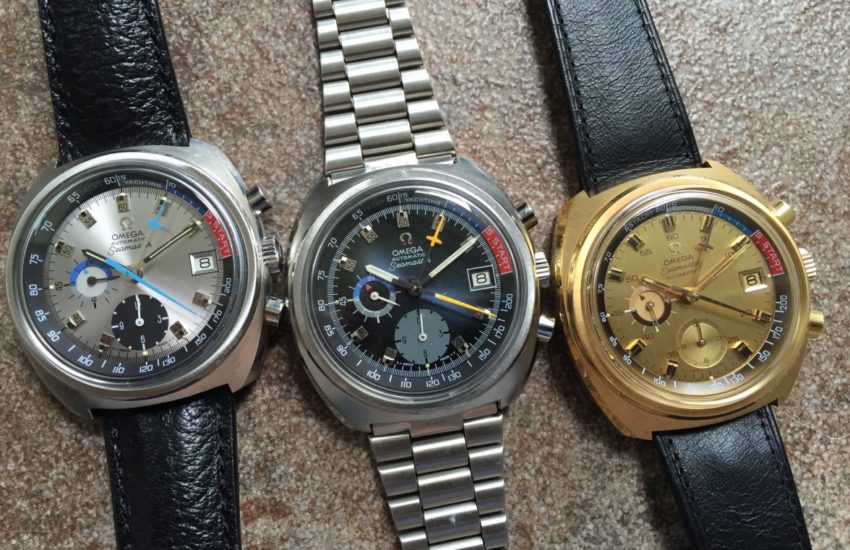General Description –
It took me a while to realize how different the 176.010 “Yachting” case is from the much more common 176.007. I had assumed it was just slightly bigger, but otherwise the same. It wasn’t until I acquired one and was able to appreciate it up close that I appreciated the additional details that Omega put into the Yachting – bevels, contrasting finishes, a more ornate caseback engraving, a sharper crystal, and (in my opinion at least) more attractive dial options. These upgrades make the Yachting my favorite of the 1040 family.
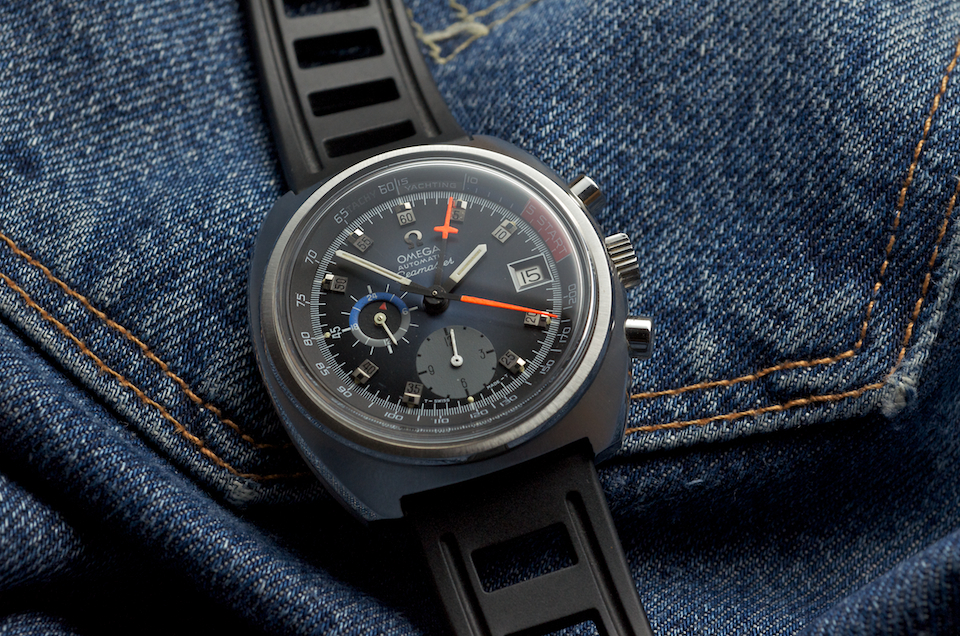
The countdown to the start of a regatta is a pretty specific thing, and in the 1960s and 1970s, watch companies were out there looking for the next purpose-driven tool watch. Yacht racing was probably a dream demographic for the Swiss in that people that own and race yachts might have relatively large amounts of disposable income, at least compared to the rest of the watch buying public. Omega and Lemania addressed this demographic by adding colorful bezel options on other chronographs to help time the starting sequence. These bezels were used on Chronostops and Soccer Timers first, but the 176.010 might be the first reference designed specifically for yachting.
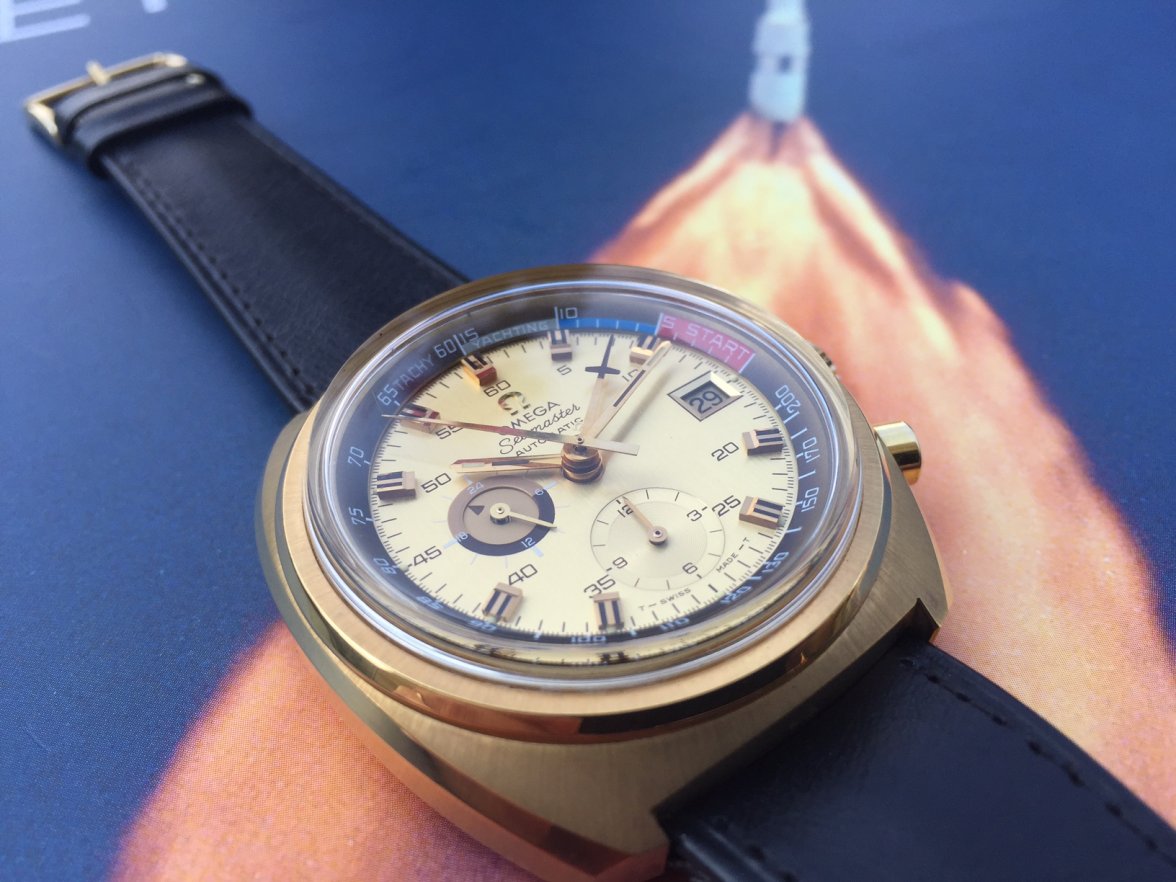
These cases (and bezels) were used in Tissot-branded Yachting watches too. As far as I can tell, the mid-case of the steel Tissots is identical to that of an Omega. There is a hallmark saying 20 microns with an Omega symbol between the lugs on the gold-plated models, so it is possible to differentiate them from gold-plated Tissots.
Fun fact: one would think that due to the additional refinements the Yachting chronograph would have been priced higher than the more common 176.007. I would have assumed that the Yachting was priced higher too. But the only catalog with pricing that has both that I found is this 1975 German one on Steve Waddington’s site showing the 007 priced at 795DM and the Yachting is 750DM. I can’t explain that one.
Caseback and Maker
For more information on casebacks, case manufacturers, and their maker’s marks, see the Caseback Collector’s Guide.
176.010 ST
Maker: EPSA (diving bell symbol)
Caseback design: High-relief engraved medallion SEAMASTER, Hippocampus logo, Omega symbol
176.010 MD
Maker: EPSA (diving bell symbol)
Caseback design: High-relief engraved medallion SEAMASTER, Hippocampus logo, Omega symbol
Specs

Production Estimates, Dates & Serial Number Range
The steel version is not exactly common, but I wouldn’t call it rare, either. I estimate that between 3,000 and 3,500 were produced, making it about as (un)common as the 176.001. The gold-plated version is what I would describe as rare – in fact it and the solid gold 176.007 are the only watches in the 1040 family that I would describe as such. I estimate that Omega made less than 1,000.
Pinning down a date range is difficult with these. A Journey Through Time only made one reference to the reference, dating it to 1972. I’m not sure what that’s based on – production date of an actual watch, sale, etc. I only have seen it one catalog from the period, and that was published in 1975. I have seen only one Extract for a 176.010, which happens to be mine, dating it to October 19, 1973.
Serial numbers for steel 010s nearly all start with 3560, more specifically, 35601-35605.
**For more recent 176.010 serial number data, head over to the interactive serial number chart and filter by reference.
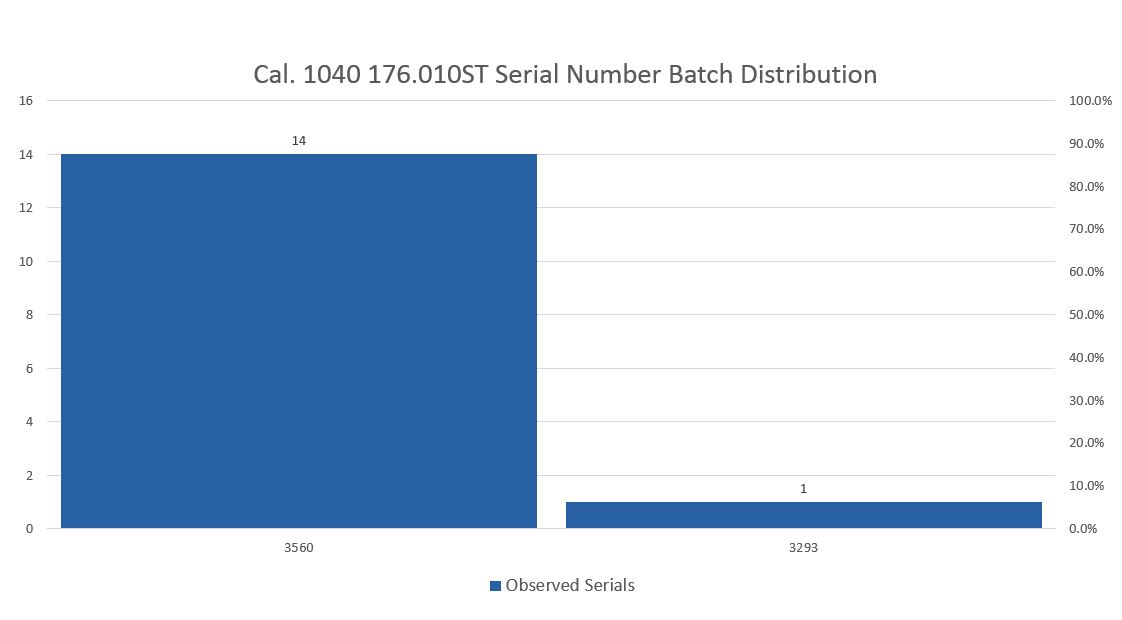
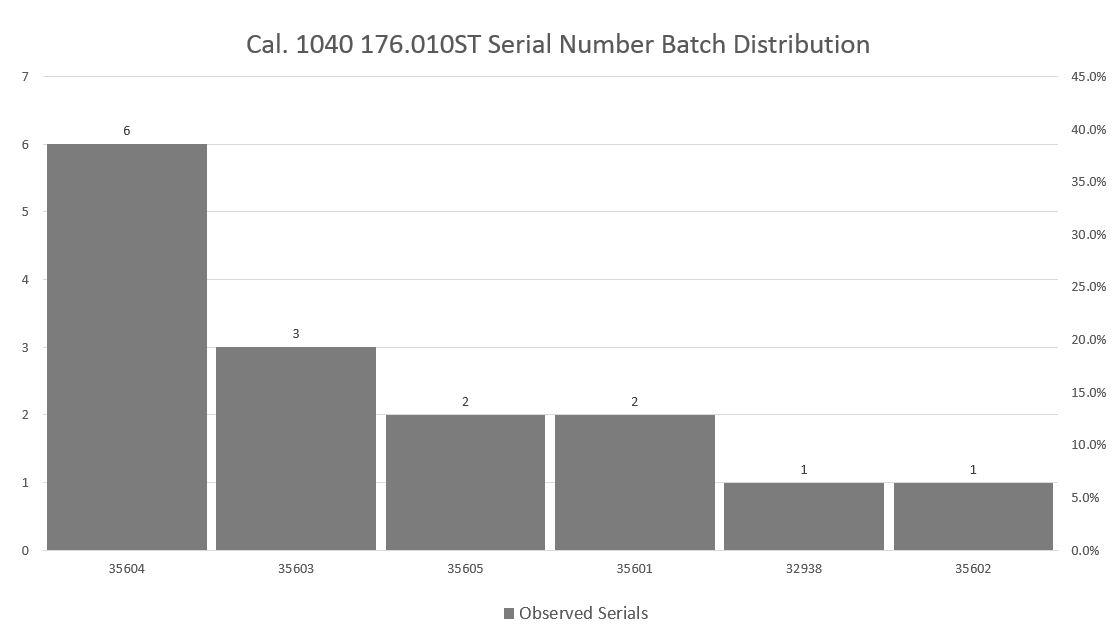
Gold-plated 010s are so uncommon that I’ve only seen 4 serials, and they are much more spread out.
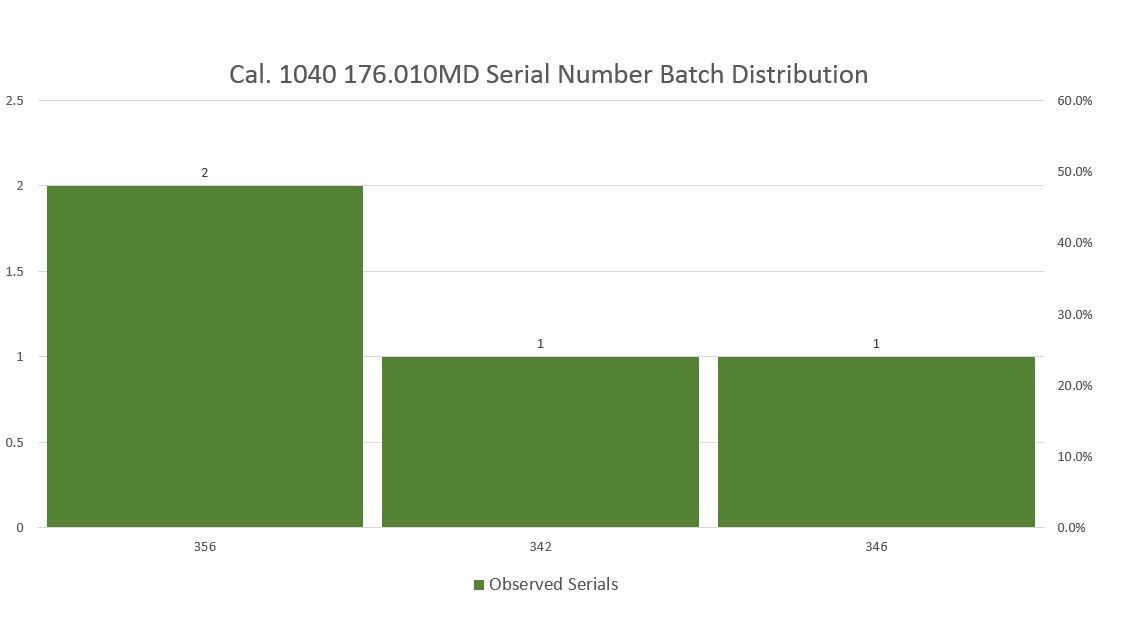
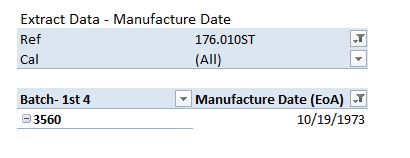
Collectors Should Look For
- Type I1 is the most common dial I have seen for Yachting chronographs. It’s the dial pictured on 010 in AJTT, and in the 1975 catalog. If you’re looking for the most representative configuration of the reference or want to be 100% certain the dial goes with the reference, seek out this dial on a steel yachting (though I’ve also seen that dial on a gold one). This variant also has a unique handset.
- Gold-plated 176.010s are difficult to assess. They were never pictured in period ads, and are uncommon in the current market. And for having seen so few examples, I’ve seen six different dials on them. My hunch based on what we’ve seen on other references is that only Type I are correct and they follow the typical color/material convention (blue and silver were options for steel watches, gold and brown for gold-plated).
- If you are looking at the gold-plated variant, make sure the 20 micron/Omega symbol engraving is present between the lugs
- The bezel on the gold-plated variant should be a gold/brown color but I’ve frequently seen the standard steel bezel which is a grey or charcoal color.
- The standard charcoal grey bezel is identical as far as I can tell between the Omegas and the Tissots.
- The crystal should have a sharp edge to it and be signed in the center
- The condition of the case is important, as it has more complex beveling than other 1040s. The surfaces alternate from sunburst brushing to mirror-polished. Polishing destroys this effect, and ruins the value of the watch.
- The dials age well and typically are not badly damaged. Redials are usually easy to spot.
- Steel versions should have a serial number starting with 3560.
From My Collection
176.010 ST – Seamaster Yachting Chronograph
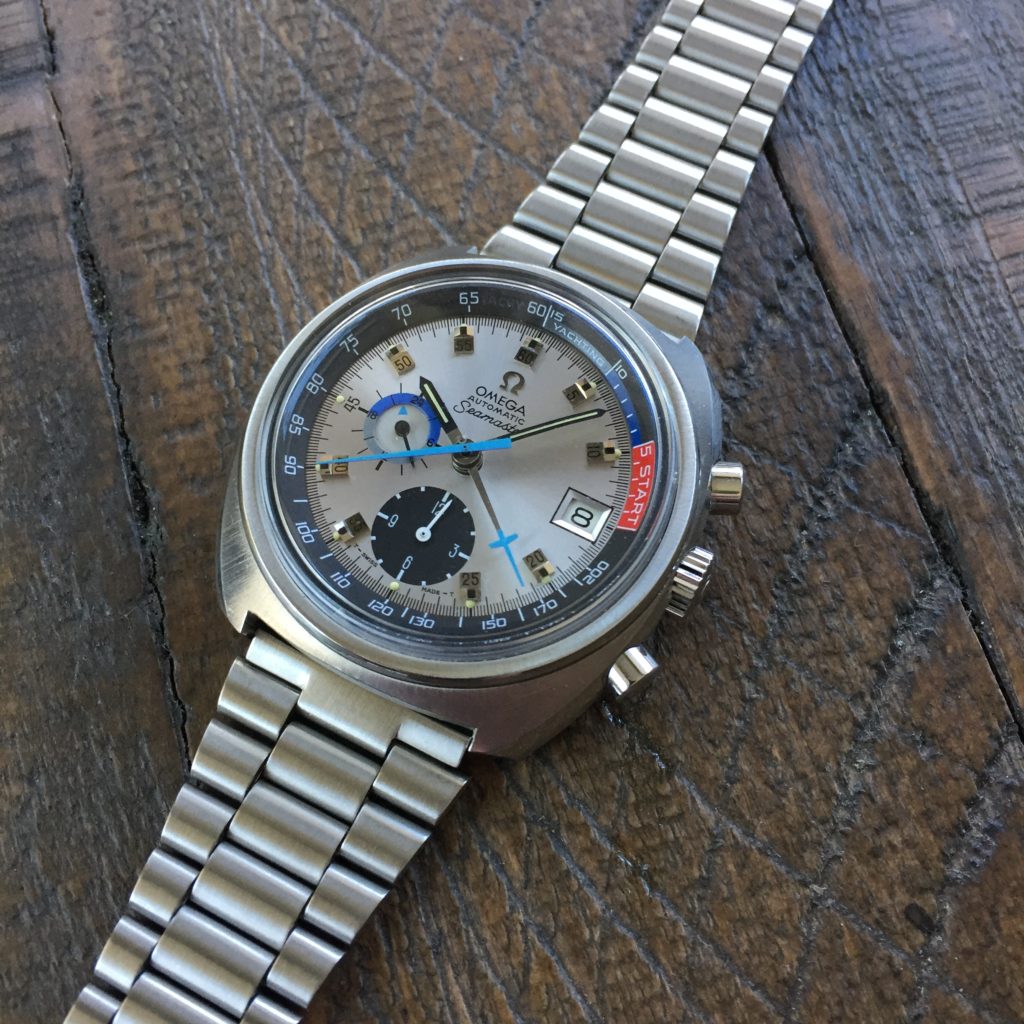
The silver dial with black subdial on this is I2, which is more common on other references, and actually pretty uncommon on the Yachting chronograph which is usually found in steel with the blue/purpleish I1 dial.
This might be my favorite of the 1040s and gets the most regular time on the wrist. The complexity of the different finishes of the case are a step ahead of any of the other watches in the family, and it wears its large size better than most of the others. It is very modern in style and sizing and would fit right in with much of the modern Omega lineup, despite being 45 years old.
The case is not perfect but is in very good condition. It retains its original finish without polish but also came with enough scratches and dings to allow me to not baby it, a sweet spot I actually aim for in watches from this era.
This one came on a 1162 bracelet, and the SN is 35603XXX.
176.010 MD – Seamaster Yachting Chronograph – Gold Plated
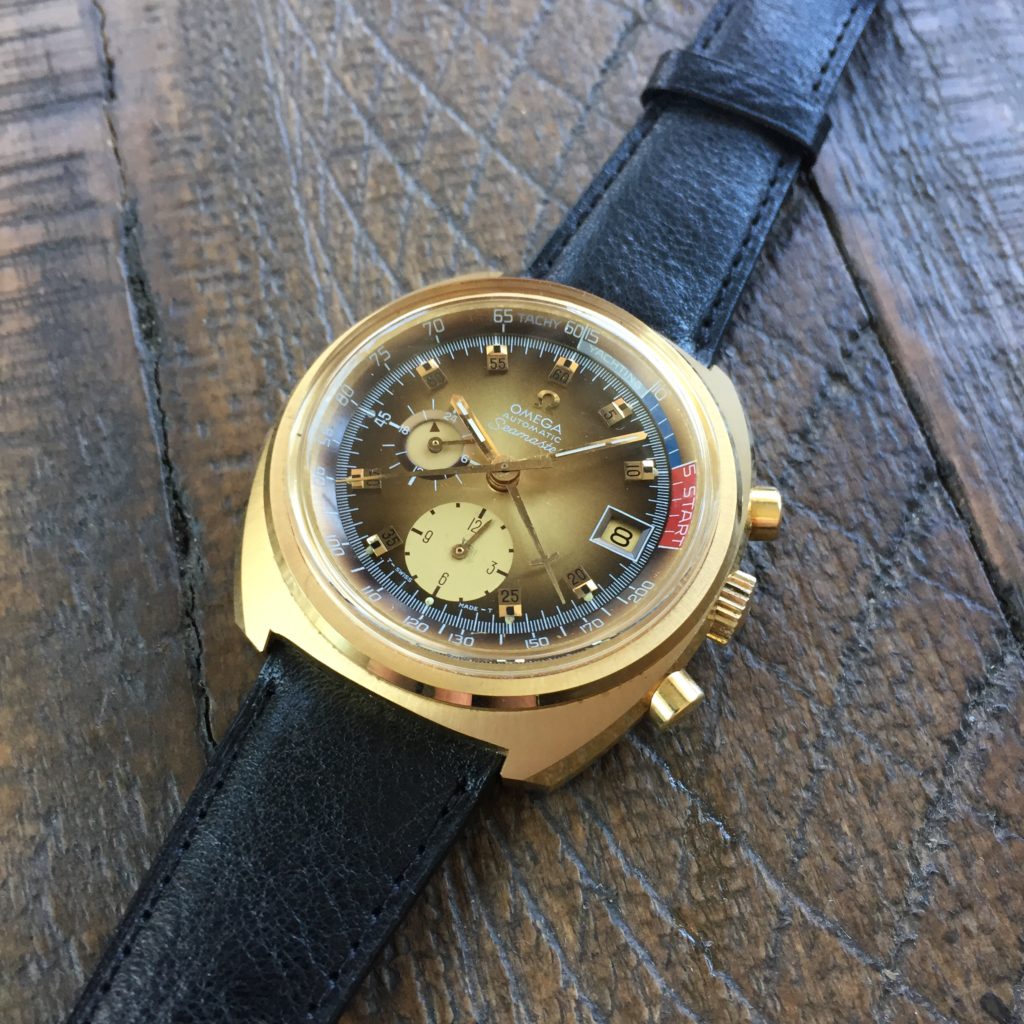
This is my rescue watch, I wrote about it a while back here. This I4 dial is rare, and I’ve never seen another. It has a darker, more gold-infused brown color than the brown seen in type A dials which are more common. I bought the watch for the movement, but the case was so over-polished it was in a sad state. I sourced a modern service case, and the watch is now a sentimental favorite. It gets worn pretty frequently.
I bought the watch with an aftermarket perlon strap, and have put it on a leather strap and period correct gold plated buckle. The serial number on this one is 34689XXX. I am usnsure if these originally came on gold plated bracelets or just on straps.

